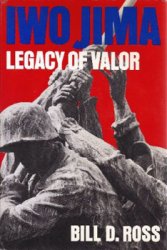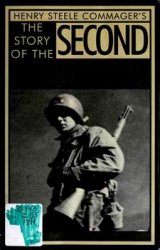The era of World War II brought the development of a uniquely close diplomatic relationship between the United States and Great Britain. Although the United States was absorbed by the Great Depression in the early 1930s and then sought insulation from global affairs with the Neutrality Acts of the mid-1930s, Anglo-American collaboration in World War II brought the two nations together in what came to be known as the “special relationship.”
During the Great Depression and the resulting domestic turmoil, the United States largely withdrew from leadership in international affairs. President Herbert C. Hoover did attempt to maintain some American involvement in global affairs, cooperating for example with Great Britain and Japan to limit naval building at the London Naval Coneerence of 1930. But other actions, such as the protectionist Hawley-Smoot Tariee Act of 1930, weak American responses to the Japanese invasion of Manchuria and the Italian invasion of Ethiopia, and the lack of American cooperation at the London Economic Coneerence of 1933, during the Hoover presidency and the first term of Franklin D. Roosevelt, reflected the U. S. reluctance to provide significant international leadership. The Neutrality Acts then confirmed the American effort to avoid entanglements in the events that ultimately led to World War II, and Roosevelt was essentially a bystander as British prime minister Neville Chamberlain concluded the Munich Coneerence with Nazi Germany. Such American policy, prompted in part by significant antiBritish sentiment within sectors of the American public, contributed to an atmosphere of some suspicion between the two nations.
By the end of the 1930s, however, Roosevelt grew increasingly disturbed about events in Europe and, especially after the outbreak of war in 1939, sought to establish a closer relationship with Great Britain. In 1939, the president succeeded in ending the arms embargo of the Neutrality Acts and to have cash-and-carry apply to war goods, thus allowing belligerent nations (Britain, in particular) to obtain war supplies if they were paid for in cash and were not transported in American ships. Roosevelt further illustrated his belief that the United States and Great Britain had developed concurrent interests in eoreign policy by establishing a close personal relationship with new British prime minister Winston Churchill. Continued collaboration between the two world leaders would later play a crucial role in the course of Allied action in World War II.
American popular opinion began to shift significantly in favor of aiding England in wake of the German blitzkrieg offensive of spring 1940 and the ongoing Battle oe Britain. Such measures as the destroyers-eor-bases deal of 1940 and the Lend-Lease Act of 1941 authorized significant American assistance to the British in the war against Germany. Discussions began in early 1941 to make strategic plans in preparation for the possibility of American entrance into World War II, a cooperation that would continue throughout the course of the war. Roosevelt and
Churchill met in person for the first time in August 1941 and produced the Atlantic Charter, which outlined Allied war principles and aims.
After Pearl Harbor and the American entry into the war, the Soviet Union joined the United States and Great Britain in endorsing the terms of the Atlantic Charter, creating the Grand Alliance. Because the United States and Great Britain shared democratic views and values as well as mutual concerns and often similar visions of the postwar world, Anglo-American relations were always closer than Soviet-American relations. Significantly, the British were involved in the atomic bomb project and discussions about the bomb’s potential use, while the Soviets were not notified of the bomb’s existence until the Potsdam Coneerence in July 1945—and even then cryptically. Shared interests between the United States and Great Britain often placed them in direct opposition with their Soviet allies. For much of the war, Roosevelt acquiesced in Churchill’s desire to delay the opening of a second ERont in western Europe, much to the dismay of Soviet premier Joseph Stalin. These mutual interests also extended to preparations for the postwar world as both the British and Americans were concerned about Soviet efforts to create a sphere of influence in eastern Europe.
But there were differences as well, and some tensions in Anglo-American relations during the war. The British did not share the anticolonial views of the United States, and resisted American pressure to grant its colonial possessions—India in particular—independence. American strategists were much more eager than the British to open the second front as soon as possible. And as it became more apparent that Great Britain would no longer be able to maintain its previous stature in international affairs and that the United States and the Soviet Union would be the dominant postwar powers, Soviet-American relations became increasingly important in Roosevelt’s priorities. At the Teheran Coneerence of late 1943, Roosevelt sided with Stalin in insisting on launching the Normandy invasion to open the second front in the spring of 1944.
Despite such differences and disagreements, and despite the shifts in global power, Anglo-American relations remained close. In the postwar world, Anglo-American relations would remain friendly as both nations would find themselves opposing their erstwhile Soviet ally in the developing cold war.
See also World War II European theater.
Further reading: Warren F. Kimball, Forged in War: Roosevelt, Churchill, and the Second World War (New York: Morrow, 1997); David Reynolds, The Creation of the Anglo-American Alliance, 1937-1941 (Chapel Hill: University of North Carolina Press, 1982).
—Mary E. Carroll-Mason




 World History
World History









